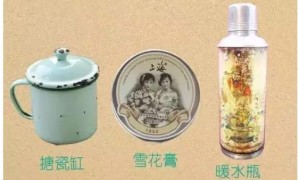食材准备:识别句子核心成分
如同菜谱需明确主料和辅料,分析句子首先要定位「主谓宾」三大要素。以《经济学人》典型长句为例:『The government, facing unprecedented pressure from international organizations advocating for climate reform, announced a radical policy shift yesterday.』核心食材是『government(主语)- announced(谓语)- shift(宾语)』,其余皆为修饰成分。建议用彩色标记法:主语红、谓语蓝、宾语绿,视觉化呈现句子营养结构。
刀工技法:断句与层次处理
专业厨师处理食材会考虑大小均匀,语法拆解同样需要合理分段。遇到包含同位语、插入语的长句时,可借鉴「洋葱分层法」:1)剥除外层修饰成分(如逗号分隔部分)2)定位主干后逐步还原细节。例如拆解『Blockchain technology, which many consider revolutionary despite its energy consumption issues, is transforming financial systems.』时,先提取『Blockchain technology is transforming financial systems』主干,再分析which引导的定语从句层。
火候控制:时态与语态的把控
就像煎牛排需要精准控制时间,动词时态决定句子逻辑脉络。重点掌握三种「基础火候」:1)现在时表客观事实(如学术写作)2)过去时叙事链(如新闻报导)3)完成时强调影响(如分析报告)。被动语态则类似文火慢炖,当动作执行者不重要时使用,如『The results were verified through multiple experiments』比『Researchers verified the results...』更突出结果本身。
摆盘艺术:特殊句式的审美价值
高级料理讲究呈现方式,强调句、虚拟语气等特殊句式就是语法中的摆盘技巧。『It is precisely this approach that deserves critical examination』通过it is...that结构突出重点,类比于用食用金箔点缀甜品。而虚拟语气『Were the data more comprehensive, the conclusion might differ』则像分子料理,用非常规形式表达假设情境。掌握这些技巧能让写作兼具准确性与优雅度。
几个练习句子
Subject-verb-object are basic sentence ingredients, like eggs and tomatoes for scrambled eggs with tomatoes.
主谓宾是句子的基础食材,就像番茄炒蛋需要鸡蛋和番茄
Relative clauses are like seasonings, overuse makes sentences hard to digest.
定语从句像调味料,过量使用会让句子难以消化
Identifying predicate verbs is like mastering the crucial heat control in cooking.
找出谓语动词相当于掌握烹饪时的火候关键点
Inverted sentences are like food plating art, altering word order while keeping core meaning.
倒装句好比摆盘艺术,改变了常规语序但核心营养不变
Using conjunctions to connect clauses is like blending flavors with sauce.
用连词衔接句子就像用酱汁融合不同食材的味道
结论
烹饪式语法学习将抽象规则转化为具象操作:定位核心成分如选食材,分层解析似处理刀工,时态把控类比火候控制,特殊句式相当于摆盘艺术。建议每日选择1-2个专业领域长句进行「烹饪拆解」,三个月后阅读速度可提升40%。记住,好语法和好料理的共同点在于——平衡是美,适度为佳。







